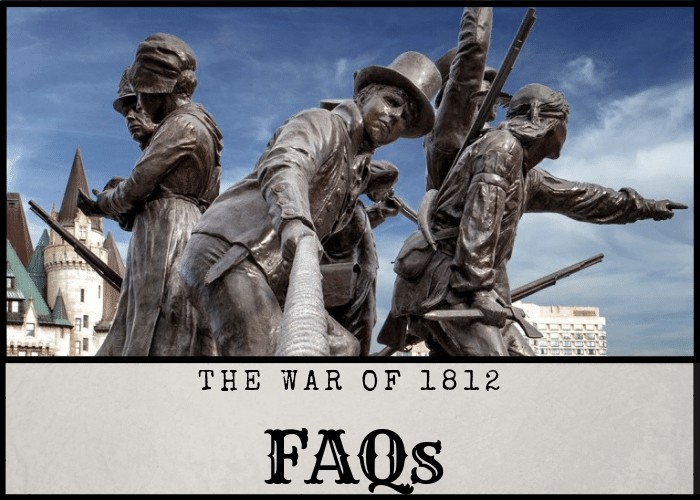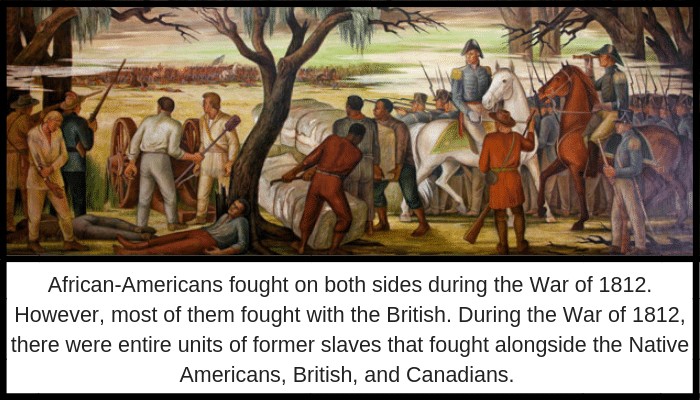The War of 1812 is often called the forgotten war. This is because it was a short war that did not accomplish much internationally and did not expand America's borders after the Treaty of Ghent was signed.
However, the War of 1812 played a significant role in American expansion and Native American relations. Natives were defeated and pushed off their lands.
How Long Did The War of 1812 Last?
The first battle of the War of 1812 is typically considered the Battle of Tippecanoe which took place in 1811, but the official declaration of war did not happen until June 18, 1812.
The Treaty of Ghent was signed December 24, 1814, but the Battle of New Orleans ended on January 26, 1815.
The official war lasted 2 years and 8 months, but the fighting lasted around 4 years.
Where was the War of 1812 fought?
The War of 1812 was fought in the United States, Canada, The Great Lakes, and the Atlantic Ocean. Battles were fought throughout the United States and on the frontier.
Major cities such as Detroit, Baltimore, and Washington D.C. all saw significant action. The final battle took place in New Orleans.
Naval Battles were fought throughout the Atlantic Ocean, Gulf of Mexico, and Great Lakes. The most important battle being the Battle of Lake Erie.
Battles with Native Americans took place throughout Georgia, Louisiana, Ohio, Michigan, Indiana, and other western territories up to the Mississippi River.
Why was the War of 1812 fought?
Europe was embroiled in the Napoleonic wars which had also consumed England. The British and French clashed across the world due to their colonies being spread over most continents.
Here are three grievances the Americans had against the British:
- British impressment was forcing American sailors to become part of the Royal Navy.
- England was blocking American trade with France
- British support of the Native Indians before and during the War of 1812.
Who Won the War of 1812?
The answer depends on who you ask.
British: The War of 1812 is not studied in England and is little more than a footnote, if that, in their history. The British were embroiled in a bitter battle against Napoleon and his conquest of Europe.
When America declared war on England they were not ready for the war and were forced to divert valuable assets from Europe to fight the war in the United States.

The fact they were able to maintain in America and defeat Napoleon was impressive.
American: American's declared war mainly due to their sailors getting pressed into the British Navy. When they declared war they also intended to invade and take control of Canada.
By the war's end, the Americans had failed to capture Canada after many attempts but had ended British impressment which was already beginning to fade before the War of 1812 began.
British interference on the frontier ended as did British support for their Native Allies after the war. American expansion continued after the war.
Native Americans: The losers of the War of 1812 was the Native Americans. They failed to secure their own nation, they lost many battles to the Americans, were pushed from their lands, lost many leaders (including Tecumseh), and their alliances were in tatters.
After the war, the British abandoned their treaty with the natives and no longer came to their aid.
Without British or Canadian support, the Natives were no match for the growing nation. America continued to expand and push the natives from their homeland.
Who was President during the War of 1812?
James Madison was President during the war, although one could argue that the War of 1812 occurred due to Jefferson's foreign policy decisions. Madison became the first President to have to flee the White House due to invasion and he also physically led an army into battle as the commander-in-chief.
His ideas also changed from wanting an agrarian society to want an industrialized nation.
How many people fought during the War of 1812?
British: 48,160 regulars, 4,000 militia. Navy: 11 Ships of the Line, 34 Frigates, 52 misc. vessels
Canadians: 10,000
American: 35,000 regulars, 458,000 local militia (most militia men was used in local defense) Navy: 12 Frigates, 14 misc. vessels, 515 Privateers.
Native Americans: 10,000 - 15,000 but the official number is unknown.
How many people died in the War of 1812?
British and Canadians: 10,000 casualties including KIA, disease, and wounded
Americans: 15,000 casualties including KIA, disease, and wounded
Native Americans: Unknown but estimated around 10,000 soldiers and civilians
What was the political fallout from the War of 1812?
The nation was split with their support for the war.
The North was not in favor of a war with Britain. The North was industrialized and viewed England as an example of how an industrial nation should look. A war would certainly hurt their economy that depended on trade.
The South was in favor of the war and still remembered the French sacrifice during the American Revolution. Since the South was an agrarian society they were not dependent on the global market.
Towards the end of the war, the Federalists grew more aggressive against the war, but after the victory of the Battle of New Orleans the public viewed the outcome of the war favorably which ended any influence the Federalists had left.
What was the economic effect of the War of 1812?
When James Madison became President of the United States he intended to carry on the vision of Thomas Jefferson which was an agrarian, decentralized nation.
The War of 1812 changed his philosophy and the need to centralize the government was viewed as necessary. The United States chartered a 2nd National Bank that helped fund the war.
The rise of new industry and modern inventions also allowed for quicker travel and communication. The nation quickly began to shift from an agrarian society to an industrial one.
What happened to the slaves during the War of 1812?
There were approximately 4,000 slaves that escaped to the British during the War of 1812. Some of these slaves fought against the United States at the Battle of Queenston Heights and Siege of Fort Erie.
There were 350 men of the "Battalion of Free Men of Color" that fought at the Battle of New Orleans with the British.
Blacks were not allowed to participate on the American side of the War of 1812.


